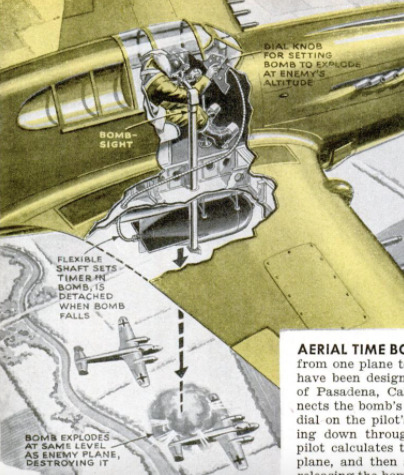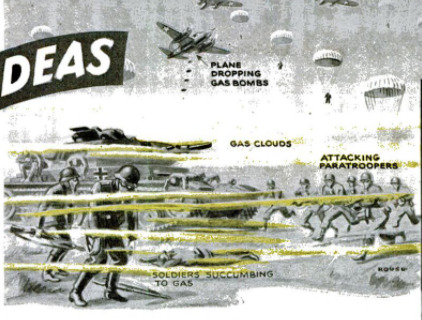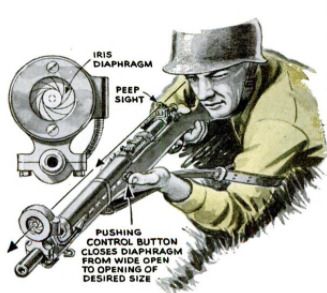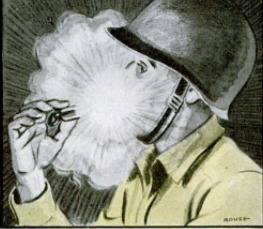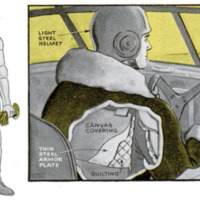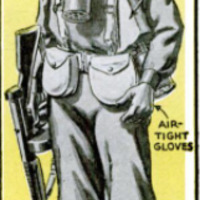War Ideas
Contenuto
-
Titolo
-
War Ideas
-
Article Title and/or Image Caption
-
War Ideas
-
extracted text
-
AERIAL TIME BOMBS that can be dropped
from one plane to blast another in mid-air |
have been designed by Stanley H. Emery,
of Pasadena, Calif. A flexible cable con- |
nects the bomb’s timing mechanism with a |
dial on the pilot's instrument panel. Peer- |
ing down through a sighting device, the
pilot calculates the distance of the enemy |
plane, and then sets the time fuse before
releasing the bomb. |
BOMBER-CREW ARMOR made of steel and
somewhat similar in design to the guards
worn by football players, is proposed for use
among Allied flyers operating over Germany.
Weighing 15 pounds, the armor, still in an
experimental stage, covers almost the entire
body, and is held on with adjustable straps.
A light steel helmet completes the outfit,
which has proved particularly effective
against flak fragments. It is limited to
bomber use, as it does not permit enough
freedom of movement for fighter pilots.
GAS-RESISTANT SUITS that would enable our troops to at-
tack the enemy in areas on which a surprise barrage of vesi-
cant gas had been laid down by plane, have been suggested by
Cpl. Harry Giffords, of Congaree Army Air Field. Made of an
airtight material, the suit fastens at the base of the wearer's
mask, and covers the entire body except for the hands and
feet, on which special airtight gloves and boots are worn. A
bellows attached to a decontaminating chemical canister could
be operated periodically to draw air into the suit.
“IRIS SHUTTER SIGHTS, similar to the
diaphragms on cameras, have been devised
for the rifles of snipers and other special
marksmen. The shutter is first opened wide
to enable the rifleman to “frame” his target;
then gradually closed until it encircles only
the target itself. The new shutter sight was
designed by John Beresky, of Brooklyn, N. Y.
BOOBY-TRAP WHISTLES have joined
fountain pens, watches, and fat wallets
as Axis “‘come-ons” for blasting unsus-
pecting Allied soldiers. A charge in the
body of the whistle is fitted with a
striker and cap. When the whistle is
blown, the vibrating pea hits the striker,
which in turn sets off the charge.
-
Lingua
-
eng
-
Data di rilascio
-
1943-08
-
pagine
-
104-105
-
Diritti
-
Public Domain (Google Books)
-
Archived by
-
Matteo Ridolfi
-
Marco Bortolami (editor)
